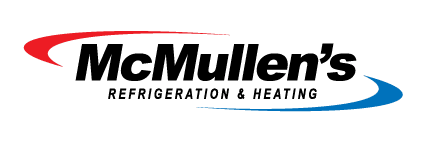Protecting Your Home’s Air Quality During Alberta’s Wildfire Season
Worried about wildfire smoke in your home? Book an air quality assessment today: +1 (403) 342-1155
For over a decade, Alberta has faced the growing challenge of wildfire smoke drifting into our communities, with record-breaking seasons becoming more common in recent years. The impact on outdoor air quality is obvious—but what about the air inside your home or business?
Poor indoor air quality caused by wildfire smoke can lead to serious health concerns, reduced productivity, and costly damage to your HVAC systems. Whether you’re running a business or protecting your family, it’s essential to stay ahead of these risks.
How Wildfire Smoke Impacts Indoor Air Quality in Alberta
Wildfire smoke carries fine particulate matter (PM2.5), volatile organic compounds (VOCs), and other pollutants that easily infiltrate buildings. These contaminants can:
- Worsen allergies and asthma
- Cause headaches, fatigue, and respiratory irritation
- Decrease overall air quality, even when windows and doors are closed
- Strain HVAC systems and increase maintenance needs
Signs Your Indoor Air Quality Is Compromised
Not sure if your home or business is affected? Watch for these warning signs:
- Persistent musty or smoky odours indoors
- Increased dust buildup on surfaces
- Irritated eyes, throat, or sinuses among occupants
- Visible haze inside near windows or vents
- Reduced HVAC efficiency or strange noises from your system
If you notice any of these symptoms, it’s time for a professional air quality assessment.
How to Test Your Home’s Air Quality Professionally
While consumer-grade air monitors can provide basic readings, a professional assessment offers a far more comprehensive picture. McMullen’s air quality testing includes:
- Measuring particulate levels (PM2.5, PM10)
- Checking humidity and ventilation performance
- Identifying sources of indoor pollution
- Evaluating HVAC filtration effectiveness
Our experts use specialized equipment to detect airborne pollutants that standard monitors often miss. This data helps us recommend the right solutions for your space.
Top Ways to Improve Indoor Air Quality During Wildfire Season
Improving your indoor air starts with the right strategy:
- Upgrade Your HVAC Filters: Use high-efficiency filters with proper MERV ratings or HEPA filters to capture fine particulates.
- Install a Whole-Home Air Purification System: Whole-home systems offer more complete protection than standalone purifiers.
- Seal Air Leaks & Improve Ventilation: Ensure windows, doors, and ductwork are properly sealed to block smoke infiltration.
- Control Indoor Humidity: Maintaining ideal humidity levels helps reduce particle circulation.
- Schedule Duct Cleaning & HVAC Maintenance: Clean ducts and routine check-ups prevent recirculation of smoke contaminants.
The Importance of Ongoing Air Quality Monitoring in Alberta Homes
Wildfire seasons are becoming more intense each year. For families with children, seniors, or anyone with respiratory conditions, ongoing air quality management is critical.
Benefits of proactive monitoring and improvements include:
- Reduced health risks
- Enhanced comfort and well-being
- Lower long-term maintenance costs
- Improved HVAC efficiency and lifespan
Book an Indoor Air Quality Assessment in Red Deer and Central Alberta
Don’t wait for smoke to become a serious indoor problem. McMullen’s Refrigeration & Heating offers professional air quality testing, filtration upgrades, and customized solutions to protect your home or business.
Call us today: +1 (403) 342-1155
Common Questions About Indoor Air Quality During Wildfire Season
How does wildfire smoke get into my home?
Wildfire smoke can enter through small cracks, gaps around windows and doors, and your home’s ventilation system. Even with doors and windows closed, particulates and pollutants can infiltrate indoor spaces if the building isn’t properly sealed and filtered.
Are standard air filters enough to protect against wildfire smoke?
Basic HVAC filters are not designed to capture fine particulate matter like PM2.5 found in wildfire smoke. Upgrading to high-efficiency filters (MERV 13+ or HEPA) and installing whole-home air purification systems provide much better protection.
How often should I have my indoor air quality tested during wildfire season?
It’s recommended to have a professional assessment at the start of wildfire season and again if you notice persistent smoke odours or respiratory symptoms. Ongoing monitoring ensures your home or business stays safe and comfortable.


